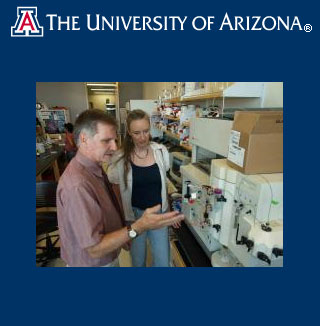
Troponin-I is usually found within heart muscle cells, where it apparently converses with other protein molecules, which may be the reason for the heart to squeeze and pump blood. During a heart attack, the cells in the affected area apparently start to die and collapse, by dropping their contents, counting Troponin, into the bloodstream.
Jeff Walker, a professor in The University of Arizona department of physiology who is also a member of the UA’s BIO5 Institute and the Sarver Heart Center, commented, “Unfortunately, the Troponin-I test doesn’t tell the whole story. The kits used to determine the levels of this protein don’t tell doctors anything about the exact nature of the damage inflicted on the heart.â€
A doctor comes to know the patient has suffered damage in the heart muscle if the blood tests apparently confirms positive for Troponin. If the doctor knows the exact level of Tropnin- I in the bloodstream, then he could get significant hints regarding the intensity of heart attack. He may also guess which might be the best approach of treatment and the patient’s individual threat of a recurring event that might be lethal.
Walker mentioned, “With the existing tests, this is very difficult to do. They are fairly blunt weapons.â€
The research group of Walker apparently works on sharpening those weapons through the application of a classy diagnostic technique known as mass spectrometry. It has supposedly acquired universal acknowledgment for prevailing over an apparently impossible impediment which seems to be the drawback of mass spectrometry to extremely minute molecules.
On the scale of atoms and molecules, Troponin-I, similar to the majority of proteins, may be vast. So big that even with fresh developments to mass spectrometry that apparently earned three scientists from the United States, Japan and Germany the Nobel Prize in Chemistry in 2002, Troponin apparently stayed off limits to mass spectrometry until now.
Walker remarked, “Troponin interacts with many other proteins in the heart muscle. You could say all those different and highly specialized proteins ‘talk’ to each other, attaching or removing portions of their chemical makeup, changing their shape and activating or inhibiting nearby proteins. We are only beginning to understand these highly complex interactions and how they influence the function of a healthy heart, let alone a heart fraught with damage of any sort.â€
Walker further added, “Right now, all the Troponin test tells doctors is whether the biomarker is there. It doesn’t give any information as to exactly how much is there, nor does it reveal anything about the chemical structure of the protein. We are seeking to develop better tests that will tell doctors the full story, so they have an accurate idea of the particular situation of an individual patient and can choose the treatment that is best for that patient.â€
Some of the already existing cells apparently use antibodies to sense either the absence or presence of Troponin in a blood sample. But mass spectrometry apparently examines the accurate molecular structure, by supposedly exposing minute facts like the state of activation.
Walker explained, “Troponin-I controls the relaxation of the heart muscle after each contraction. So it is easy to understand why a disruption in its molecular structure could result in cardiomyopathies – heart malformations, or arrhythmias – abnormal heart beats.â€
Walker’s group may be conducting a clinical study that may seek to allow clinicians to calculate approximately their patient’s cardiovascular risk profiles.
Via blood samples which were supposedly acquired from patients who went through diagnostic testing, the researchers are apparently intending to utilize their highly sensitive mass spectrometry to examine and recognize genetic variations that may make a person more or less vulnerable to heart disease.
